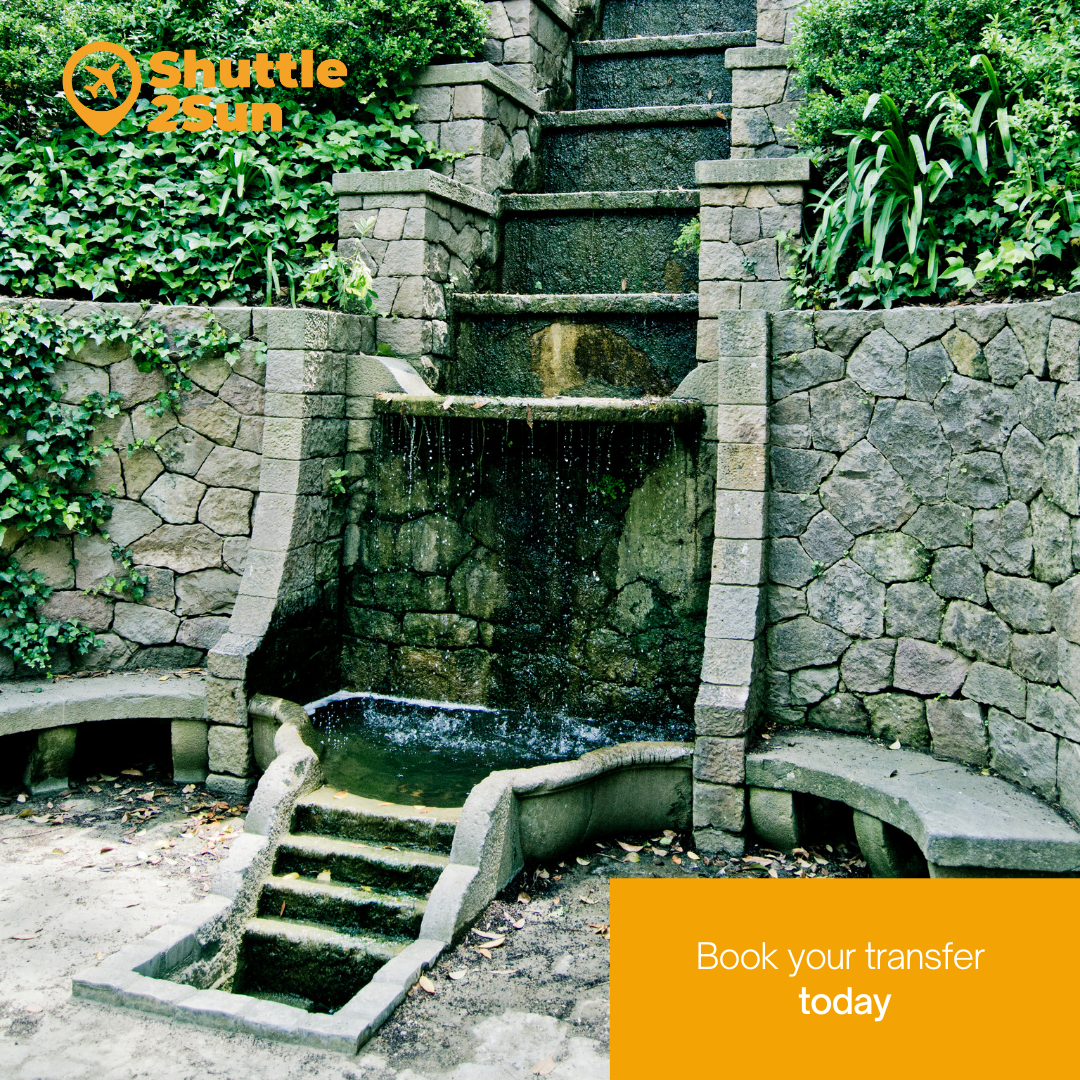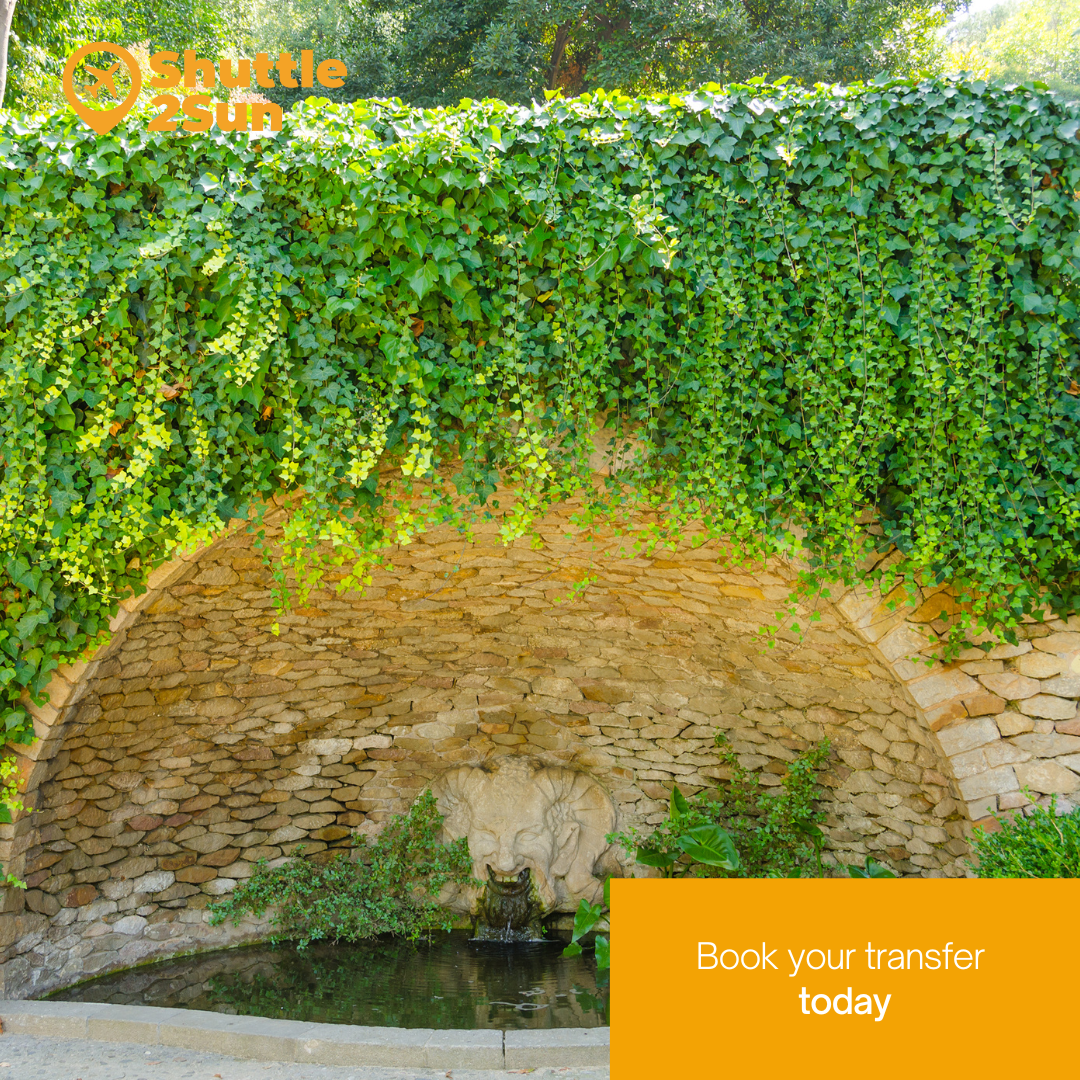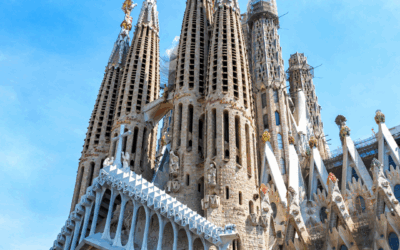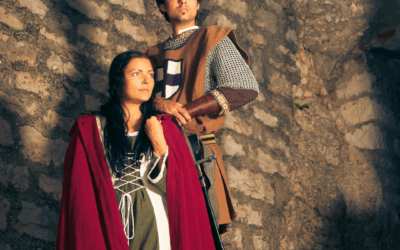One of the best places in Barcelona to escape the hustle of the city and enjoy the great outdoors are Jardins de Laribal, located in Parc de Montjuïc. Strolling through the most hidden corners, under the sound of gurgling waterfalls and the magnificent smell of the most exotic plants, is one of the pleasures offered by this extensive 20th century rose garden.
You have at your disposal the private transfer services and shared transfer services, low-cost and sustainable, of Shuttle2Sun, so that you can move, in a comfortable and agile way, to Barcelona, from Barcelona airport, Barcelona port, Girona airport and Camp de Tarragona AVE train station.
Origin
The origin of Jardins de Laribal dates back to 1908, when the Barcelona City Council decided to acquire an estate belonging to Josep Laribal, a well-known Catalan journalist and lawyer, editor of the newspaper El Diluvio. The intention of the city council was to found the Escola del Bosc and, at the same time, to carry out the necessary work to urbanise a large part of Montjuïc mountain.
Although the project was initially commissioned to Josep Amargós, it ended up being the work of the French engineer and landscape architect Jean-Claude Nicolas Forestier and his assistant Nicolau M. Rubió Tudurí, as the commissioner of the 1929 Barcelona International Exhibition, Francesc Cambó, chose them to carry out the landscaping of the area. The work was completed in 1922, opening one of Barcelona’s great jewels to the public.
The place where Jardins de Laribal now lie was a meeting point for hikers and also for a group of gastronomic and political intellectuals, La Colla de l’Arròs. The latter used to meet in the building where the Ethnological Museum of Barcelona is now located.
Vegetation
These gardens cover a total area of 5 hectares, from Miró Foundation to Jardins del Teatre Grec, all the way to the Ethnological Museum.

The format of this space is inspired by the ancient Arab gardens, where water and long geometric paths predominated; and by the “cármenes” of Granada, typical houses of that city, characterised by their orchards with fruit trees and gardens with aromatic plants, where water was one of the main protagonists.
You will find native Mediterranean vegetation, mixed with the most exotic species you can imagine, coming from other continents. Some of the predominant specimens are the white pine, the laurel, the stone pine, the orange tree and the cypress. There are also plane trees in Plaza del Claustre, and acacias and oleanders on the stairs of the Generalife. You can also enjoy the delicious aroma of geraniums, lavender and rosemary at different points along the route.
Another very characteristic plant in these gardens is ivy, which adds a special and private touch to the most beautiful corners of the park.
If you are thinking of visiting Jardins de Laribal, remember that with Shuttle2Sun‘s private transfer services and shared transfer services, low-cost and sustainable, you can get to Barcelona from Barcelona airport, Barcelona port, Girona airport and the AVE Camp de Tarragona train station.

Architecture
In this garden, the French architects took advantage of the existing slope of the mountain to create a park with different gradients, connected by stairs, terraces and paths. Also noteworthy are the exposed brick and stone pergolas, which connect the different sections and provide shade. All this, together with the fountains and beautiful waterfalls that accompany the route, will immerse you in a romantic landscape, where you can stroll with your partner, family, or even alone, to connect with yourself.
It also has the stairs of the Generalife, inspired by the Generalife gardens in Granada, which link this upper section of the gardens with those of Teatre Grec. It is one of the most beautiful corners that you cannot miss.
Sculpture
Jardins de Laribal are an open-air museum. They house various works of art, including three female figures, all dating from the first half of the 20th century. On the one hand, Estival, by Jaume Otero, from 1929. La noia de la trena, by Josep Viladomat, from 1928; and lastly, Repòs, the oldest, by the same artist, from 1925.
You can also enjoy the different fountains found in the park, such as the best known, the Cat Fountain, in which, as its name suggests, the water comes out of the head of a feline, a work by Joan Antoni Homs in 1918, and also the Satan Fountain, a possible meeting place for witchcraft followers.
On the other hand, following the aesthetic line of the Arab gardens and the “cármenes” of Granada, you can see that the elements are decorated with ceramic tiles, which add colour and liveliness to the intense green of the plants.
Other parks in Montjuïc
Montjuïc has a large number of gardens of different styles, such as Jardins de Mossèn Costa i Llobera, dominated by cacti, palm trees and other exotic plants; Jardins de Mossèn Cinto Verdaguer, with magnificent views of the city; Jardins del Teatre Grec, with the amphitheatre; and Jardins de Miramar, where the cable car station is located.
Also, Jardins de Joan Brossa, an area aimed at families, with children’s playgrounds; Jardins del Mirador del Alcalde, with fountains by the same architect who built the Magic Fountain of Montjuïc, Carles Buïgas. As well as Jardí de les Escultures, the two botanical gardens of Barcelona, and Mirador del Migdia and Mirador del Poble Sec parks.
Don’t think twice. Discover the most unknown corners of Montjuïc, in Barcelona. Get around with Shuttle2Sun‘s private transfer services and shared transfer services, low-cost and sustainable, from Barcelona airport, Barcelona port, Girona airport and Camp de Tarragona AVE train station.



